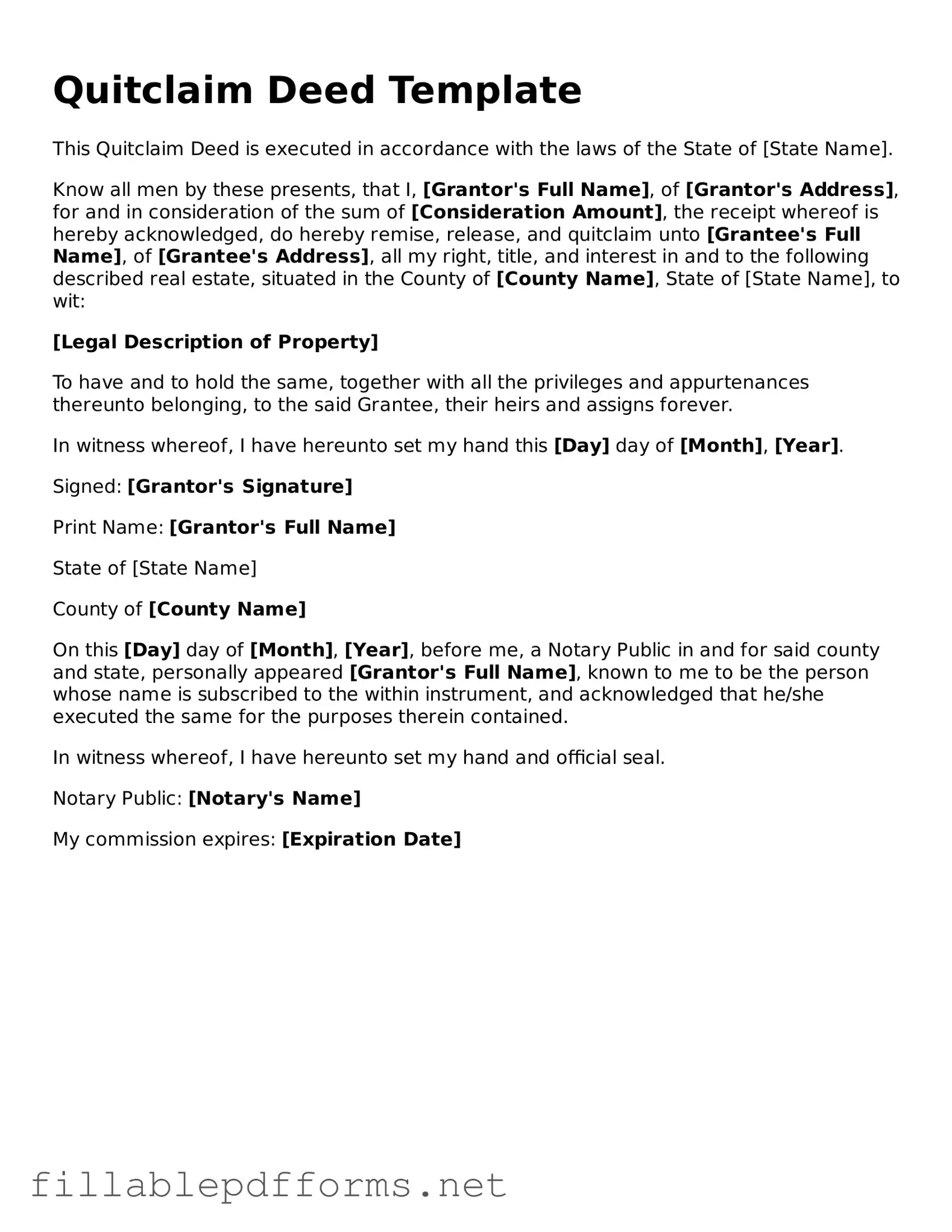The Quitclaim Deed form serves as a crucial instrument in real estate transactions, primarily facilitating the transfer of property rights between parties. Unlike other deed types, it does not guarantee that the transferring party holds clear title to the property; instead, it conveys whatever interest the grantor possesses, if any. This form is often utilized in situations such as divorces, transfers between family members, or when a property is being gifted. One of the key features of a Quitclaim Deed is its simplicity, which allows for a quick transfer of ownership without extensive legal formalities. However, potential buyers should exercise caution, as the absence of warranties means they may assume risks associated with existing liens or claims against the property. The form typically requires the names of both the grantor and grantee, a legal description of the property, and must be signed and notarized to be valid. Understanding these elements is essential for anyone considering using a Quitclaim Deed, as it can significantly impact future ownership rights and responsibilities.
